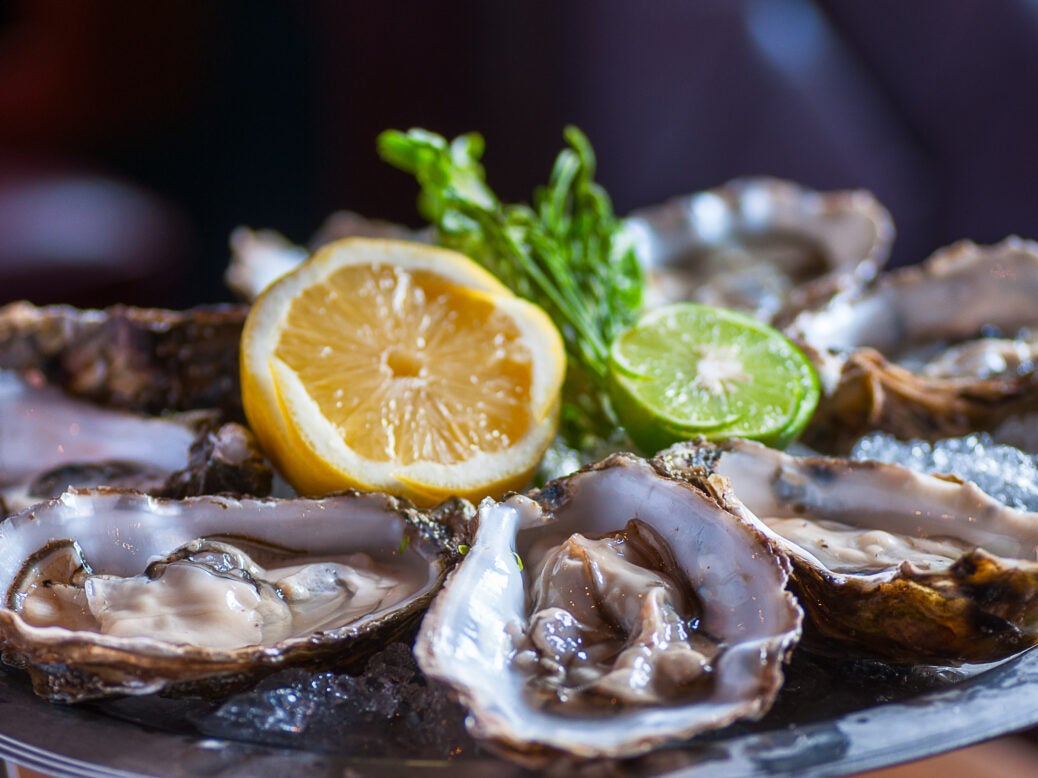
Restoring native oyster habitats could be key to reversing massive depredations that our marine life has suffered for hundreds of years, writes Charles Clover, the executive director of the Blue Marine Foundation
There is an element of jeopardy associated with oysters. It is not just whether, after severing the muscle that holds it to the half-shell and seasoning it with onion vinegar or lemon juice, you can get it down in one and experience that fleeting moment the nature writer Peter Marren has described as one’s mouth filling up with the taste of the freshest rockpool in the world. There is also the lurking fear, fed by stories mostly from before modern environmental health regulations, of people eating a ‘bad oyster’.
That was, we now realise, a classic example of a transferred epithet: the oyster was all right but had imbibed, and was processing, some pathogen picked up from humans.
Arguably the most famous oyster scare was in 1902, when the town of Emsworth in Hampshire gave a banquet in Winchester to celebrate the success of the local oyster industry, which then employed between 300 and 400 people out of a population of 3,000. A number of guests at the banquet became ill and the Dean of Winchester died from typhoid attributed to an Emsworth oyster. The industry was devastated for a generation.
The extent to which oysters pose a risk to us has obscured the extent to which we pose a risk to them. Only in recent years have we realised from studying the devastation we caused to oyster populations in the New World what we must have done in Europe too. The oysters of Chesapeake Bay formed reefs so large that visitors to North America in the 1600s described them as hazards to navigation. The enormous extent to which oysters existed in Australia, and were entirely fished out by the late 1940s, is a case of what scientists have called ‘collective, intergenerational amnesia’.
What happened in Europe is less well documented, but it can be assumed that coastal oysters were harvested out in all but a few places, leaving refuges in deeper water which boats equipped with dredges eventually harvested too. The oyster beds of the central North Sea were estimated by the Olsen Piscatorial Atlas of 1888 to have been 200 miles long, all of which were fished out by the 1930s.
As little as a century and a half ago, oysters were cheap and a food of the poor. Now the true native oyster, Ostrea edulis, is a delicacy for the rich. It is found growing wild in low densities in remote places but is commercially harvested only on what are called ‘private grounds’ – creeks around Essex and Kent and in one Scottish loch where laws confer the exclusive right to certain landowners to manage the oyster, which they still do very well.
The rest of the oyster grounds around the coast of UK and northern Europe – 95 per cent of what once existed – are thought to have gone, the result of an often overlooked ‘tragedy of the commons’.
Having exhausted the native oyster, commercial growers resorted in 1965 to the Pacific oyster, originally from Japan, which now accounts for 98 per cent of the world’s harvested oysters. The Pacific (or Rock) oyster takes only 18 to 36 months to reach marketable size, compared to 48–60 months for the European oyster. Annoyingly, in the past 20 years it has also started to breed in UK waters and has begun to cause competition with the struggling, disease-prone and temperamental natives.
Now we have begun to realise that the value of native oyster reefs is greater than the value of the oysters harvested from them. A single mature oyster has the capability to process around 200 litres of water a day. What’s more, the habitat provided by native oysters has an as yet unexplained ability to attract other marine life.
Oyster nurseries placed in marinas around the Solent as part of the Blue Marine Foundation’s restoration project there have so far attracted 130 species, including European eels, juvenile sea bass, tompot blennies, snake pipefish, sea squirts and, most miraculous of all, a seahorse.
So the native oyster is the key not only to cleaning up the murky, sewage-enriched waters of the Solent, but also to restoring native species, including fish. What has given hope of reversing the massive depredations of history is the creation of marine protected areas – some specifically designated for oysters, some not. These will act as refuges for broodstock oysters, provided we can rear and reintroduce enough of them to overcome the perils of disease, invasive species and predation.
The hope is that in a couple of decades’ time the water will be richer and clearer – and that an oyster fishery may reopen. Needless to say, all that will involve an element of risk too.
Image: Suporn Thawornnithi/Shutterstock







